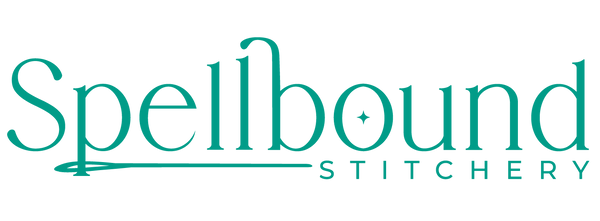For some of us, this is a time of great upheaval, uncertainty, and stress.
I want to share ways that our craft, our art, and our creativity can support us in these times of uncertainty.
My life has been filled with events of major upheaval, including homelessness as a teen, multiple sexual assaults, and struggles with PTSD. Much of what I know of coping with stress and healing from trauma was learned via practice, not theory.
I have seen how needlepoint is used as a self-care tool, and I have also personally reaped the benefits of using needlepoint in my self-care and spiritual practice. What I share with you will be very general advice and insight, not a substitution for speaking with a therapist or a physician.
Your Nervous System

Your nervous system floods your body with cortisol and other hormones when you experience stress or trauma.
Stressful experiences or events cause your body to have a physiological reaction, even if you are not aware that it is happening.
You’ve probably heard of “fight, flight, freeze” - the natural response to a traumatic or stressful event. When doctors talk about stress having a negative effect on your body, they’re talking about your body’s nervous system flooding your body with hormones and causing actual physiological changes as a result. Your nervous system was built to help you run away from tigers or fight off feral raccoons, NOT to read distressing headlines or worry about your bank account. 10,000 years ago human beings didn’t have bank accounts!
Our bodies evolved 200,000 years ago for the stresses of 200,000 years ago, but we are living and dealing with the stresses of today. Our bodies can’t tell the difference.
The long-term activation of the stress response system and too much exposure to cortisol and other stress hormones can disrupt almost all the body's processes. This puts you at higher risk of many health problems, including:
-
Anxiety.
-
Depression.
-
Digestive problems.
-
Headaches.
-
Muscle tension and pain.
-
Heart disease, heart attack, high blood pressure and stroke.
-
Sleep problems.
-
Weight gain.
-
Problems with memory and focus.
For me, stress manifests as depression and anxiety. It’s hard to relax and be present with friends and family, I have a lack of interest in activities that are healthy for me, such as exercise, art, cooking, or gardening. I’ve observed a tendency toward pessimism, anger, and hopelessness when I feel stressed and overwhelmed. All of these things contribute to a feedback loop - making me feel even more stressed and anxious. Stress can’t be left unchecked - it needs a way out.
What happens to my creativity when I’m stressed?
For me, one of two things happens -
I either FREEZE, and melt into a puddle of depression and hopelessness that I need to crawl out of
Or
The FIGHT kicks in and I use my creativity to make a design that speaks out against something I am upset about.

Here are some of my needlepoint designs that have been inspired by stressful moments recently.
Taking action (fight) of any kind helps to channel the stress and redirect it.
Sitting with stress or burying stress doesn’t make the stress hormones go away. Prolonged minor stress can cause more problems, lead to panic attacks, or deteriorate one's health.
Create a list of action items you can take when you’re stressed.
Some ideas include:
-
Talk to someone
-
Take a walk or exercise
-
Pet your animals
-
Write a note to your representative
-
Journal
-
Breathing exercises
-
Body scans
-
Stitch
-
(Add yours here!)
Additionally, it helps me to pay attention to my thoughts and feelings when I’m stressed. Left unchecked, negative thoughts, or feelings of anger, sadness, hopelessness fear, and anxiety can cause us to spiral down deeper into those dark places. If I feel a negative thought or feeling emerge, I validate it, and know that there is a good reason to feel that way. I then thank it for informing me, and redirect myself in a different direction - to another project or activity that feels inspiring rather than draining. If needed, I reach out to a therapist when I feel stuck.
Stitching as Stress Management
The repetitive movements of stitching have been shown to reduce cortisol levels and lower blood pressure.
In my own body, I can feel an almost immediate relaxation of my vagus nerve, and a settling of my nervous system when stitching.
The “Flow State” one can achieve through stitching allows for a meditative-like experience, which is very helpful for people who want the benefits of meditation but who can’t quite get themselves to sit still for 20 minutes at a time.
Your reward centers in your brain are triggered while stitching, as working towards completion on a project releases dopamine.
Stitching and needlework are so effective at reducing stress that in both World Wars, injured soldiers were encouraged towards needlework to help them as they healed from both physical wounds and mental ones. The Textile Research Center has an article about WWI soldiers embroidering that I encourage you to read for more information.

I think that stitching can be a great piece of your self care puzzle, but I know that self care is an ongoing pursuit and something that we must practice with diligence. I use the word practice intentionally. I do not think that stress interventions are a one and done deal. Stress will come up, hard times will come up, things in life are difficult to predict or control. We will go through cycles of good and cycles of bad, and if we can maintain a consistent practice as we navigate those cycles we will be better equipped to handle stress and use healthy coping strategies going forward.
